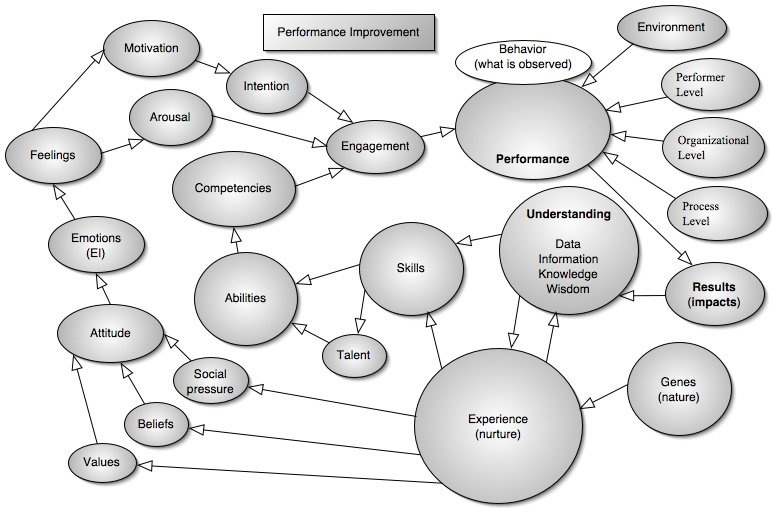The Environment and Performance
An organization is a process that converts various resources into products and services, which is then provided to the receiving system or market place (external environment). The organization is guided by its own criteria and feedback, but is ultimately driven by feedback from the market. An organization must adapt to this environment or ceases to exist.
Eighteen months after Peters and Waterman published their list of excellent companies (In Search of Excellence), one-third of them had dropped off the list. The reason? The majority failed to respond adequately to changes in the external environment. And to “adapt” means the organization has to plan for it; for adaptation is a process, not a single event.
Internal Environment
Although the internal environment has a lot of meanings within organization development circles, such as culture or climate, we are mainly concerned with the surrounding area in which the front-line employees perform their work, to include ergonomics (design of work area), processes, equipment, and the immediate surrounding structure.
Often, an employee cannot perform to standards due to inefficient processes, poorly designed jobs, lack of tools or equipment, or a badly designed workstation. Performance improvement processes must consider these factors.
Culture and the Environment
The reason the human species dominates the planet and gorillas are in danger of extinction lies not in our 5 percent of special DNA or in our ability to learn associations, or even in our ability to act culturally, but in our ability to accumulate culture and transmit information, across the seas and across generations — Matt Ridley in Nature Via Nurture
Culture means two different things:
- High art, discernment, and taste, such as the “opera”
- Ritual, tradition, and ethnicity
The first meaning came out of the French Enlightenment, the second out of the German Romantic movement. Franz Boas brought the German usage to America and planted the idea that culture is what sets people free from their nature.
Michael Tomasello of Harvard has theorized that only humans can place themselves in other's mental shoes. We alone understand the goals of other animals' behavior, thus only we can engage in cultural learning. Although animals can learn to imitate certain behaviors, it becomes much more profound when the imitator has gotten inside the head of the model. It is the first part of our culture acquisition device, with the other parts being language and manual dexterity (Tiger and Fox, 1971).
References
Matt Ridley (2003). Nature Via Nurture New York: Harper Collins.
Rummler, G. & Brache, A., (1990). Improving Performance: How to Manage the White Space on the Organization Chart. San Francisco: Jossey-Bass.
Tiger, L. and Fox, R. (1971). The Imperial Animal. New York: Transaction Pub.



